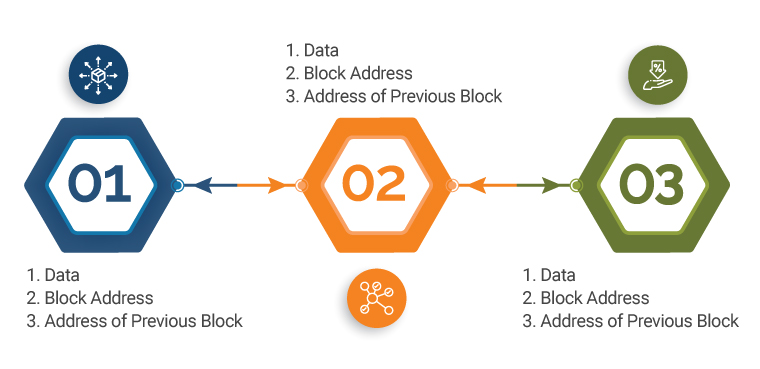Blockchain is a technology that offers applications far beyond that of secure payments. As it evolves into a platform for digital transformation, Blockchain provides a cost-saving and disruptive alternative to the record-keeping mechanisms and current centralized transactions. Wide acceptance of blockchain by various industries like finance, healthcare, retail, insurance, and many more may result in poor performance, due to multiple node validations.

Hence, performance testing of blockchain-based applications has become very important. Blockchain performance testing comprises describing the metrics for tuning the system, evaluating whether the application is production-ready, and identifying performance bottlenecks.
Keep exploring more on performance testing with our quarterly performance testing expert series.
Know About Blockchain Technology
Blockchain: A chain of connected blocks using cryptography and spread over distributed ledger in the cloud.



Blockchain Types
| Following are the types of blockchain networks: |
|---|
|
Public Blockchain: Anyone can access it without any permission. They are open to following the idea of decentralization.
|
|
Private Blockchain: Only known users of a single organization can access the network. These are not decentralized and only selected nodes can participate in the process.
|
|
Consortium Blockchain: Only known users of multiple organizations can access the network. One of its main benefits is that it can validate, and also initiate or receive transactions.
|
How Does the Request Cycle for Blockchain Work in the Backend
The following diagram represents the backend request cycle for blockchain-based application:



Why Do You Need Performance Testing in a Blockchain Network



- To monitor the health of connected peers (disk i/o, CPU usage, and memory utilization)
- To ensure scalability to support increasing the number of nodes
- To maintain data integrity without any packet loss
- To ensure a seamless transaction
- To track the number of failed/delayed transactions due to timeouts
The KPIs To Be Monitored
Here is the list of the KPIs that can be considered while conducting performance testing of the blockchain applications:



- Transaction-level: At the transaction level, it is recommended to monitor the throughput, transaction failures, response time, etc.
- Network-level: At this level, the number of transactions per second, disk I/O, transactions per CPU, etc. are evaluated.
- Node-level: Node-level monitoring includes analyzing block time, block size, transaction latency, etc.
Challenges of Running Performance Tests On a Blockchain Network
As blockchain networks are a new technology, test engineers face several challenges when testing blockchain-based applications. The typical challenges are as follows:
Blockchain Performance Testing Tools
-



Jmeter
-



NeoLoad
-



Hyperledger Caliper
-



ELK Stack
There are many tools like JMeter, NeoLoad, Hyperledger Caliper, and ELK Stack that can be used for performance testing of blockchain applications.
Factors Influencing the Performance of Blockchain Applications
The following factors may degrade blockchain performance:
-


Individual Node Transaction Handling Capacity
Larger payloads require more time to replicate among nodes since the transaction as well as its payload must be sent over the network to every node.
-


Node Local Storage
Blockchain networks often allow key-value pair datasets to keep track of transactions and the ledger’s current state.
-


Transaction Size
Larger payloads require longer replication times across nodes since the transaction, as well as its payload, must be transmitted across the network to each node.
-


Smart Contract Complexity
Processing latency increases along with the sophistication of smart contracts, which has an effect on overall performance.
-


The Number of Nodes That Participated in the Network
The performance suffers as the number of nodes grows since it takes longer for transactions to propagate and unanimity to be reached.
-


Node’s Own Hardware Configuration
The term “Node’s own hardware configuration” refers to the process or mechanism used in a blockchain network to propagate, validate, and finalize transactions.
-


Network Latency
To validate a transaction, it must be broadcast to every node, and the nodes’ responses must then be compiled for majority-based consensus.
Best Practices for Running Performance Tests on Blockchain Applications



When performance testing blockchain applications, one can adhere to the following best practices:
- The major areas to focus on while testing includes the block size, chain size, data transmission capabilities, and addition of a new block.
- Ensure data integrity so that there is no loss of information in the blockchain application
- Test small units first then switch to end-to-end testing
- Test smart contracts
Conclusion
The adoption and success of blockchain applications depend on their scalability and establishing trust. It is important to have performance benchmarking, monitoring, experimental analysis, and simulation which will help to cover non-functional testing aspects for a given set of configurations. To know more about performance testing services for blockchain applications, contact QASource now.
Source: https://blog.qasource.com/es/performance-testing-of-blockchain-applications
